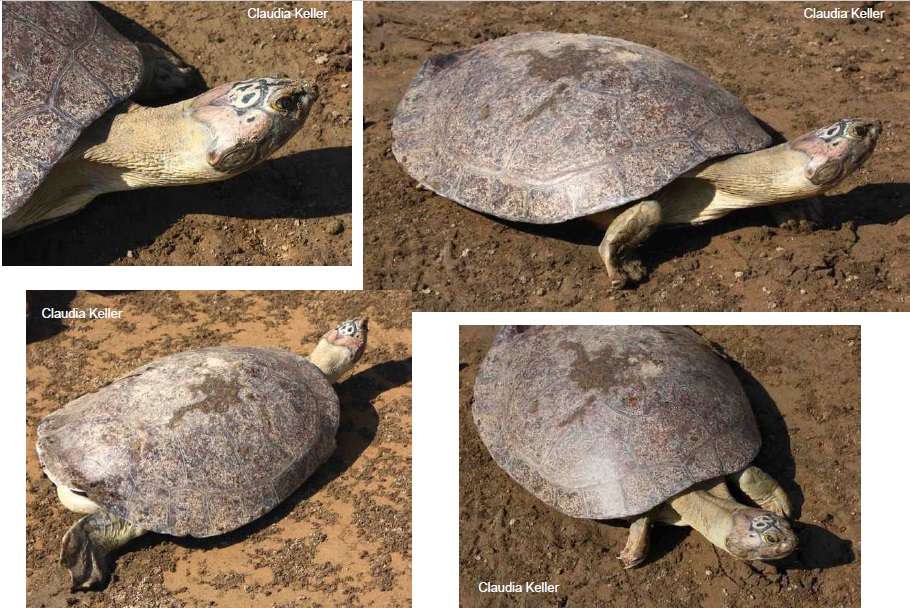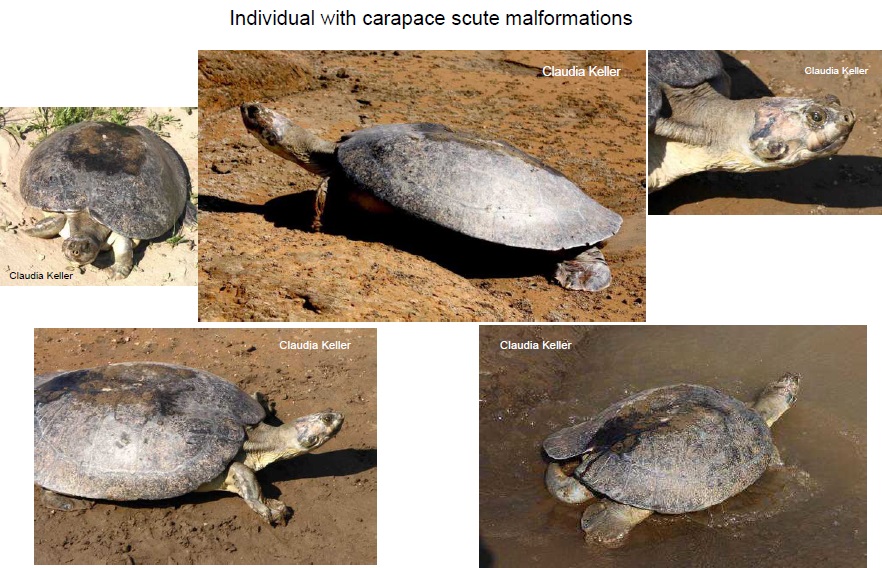 Português
Português English
English
Languages
Podocnemis expansa


Pleurodira (Side-necked Turtles)
Family: PODOCNEMIDIDAE
Scientific Name: Podocnemis expansa
The Arrau River turtle, South American river turtle, or Giant South American turtle.
Local Names: tartaruga-da-amazônia ou tartaruga (females) and capitarí (males), charapa (Peru), tortuga (Columbia, Venezuela).
Length/Weight: The largest freshwater turtle in South America, reaches 70 cm in length and weighs, on average, 25 kg. The largest female registered measured 109 cm in length and weighed 90kg.
Species characteristics: They are brown, grey or olive green in colour and the shell is flatter and wider towards the posterior. Males are smaller than the females and the carapace is straighter and they have a longer tail. Juveniles and sub-adults have yellow markings on the head which in adult females becomes a darker brown as they get older.
Distribution: They occur everywhere in the Amazon Basin.
Reproduction: During the dry season the turtles migrate according to regional variations and the water level of the river, looking for spawning areas. In some areas like the Guaporé and Trombetas rivers the spawning areas occur in groups. Before spawning, the turtles gather together in front of the "tabuleiros" (as they are called) or nesting beaches. On leaving the water to spawn, the turtles move along the beach to find a good spot to lay their eggs. The pit dug by the female may be 80 - 100 cms deep. After the egg laying they remain in groups in front of the beach for a time which coincides with the reduction in water level and the hatching of the young. They lay about 100 eggs, once a year. The sex of the young is determined by the incubation temperature (females develop at higher temperatures and males develop at lower temperatures) and they hatch after 45-55 days.
Exploitation: Since the Portuguese empire, the meat and eggs of the Arrau turtle have been consumed by man. The naturalist Henry Bates reported that near the city of Tefé about 48 million eggs were collected annually between 1848 and 1859. Currently, the law allows the breeding and marketing of this turtle to discourage the illegal trade .
Conservation: In 2012 this species was classified as near threatened by the Scientific Endangered Species Assessment of Brazilian Fauna. Every year about 2 to 3 million turtles born on the beaches of Amazonian rivers are being monitored and protected. Although this number is far from the 48 million eggs that were collected annually in the nineteenth century, in just four beaches, it's a start!
Distribution Map (from Wikipedia)


